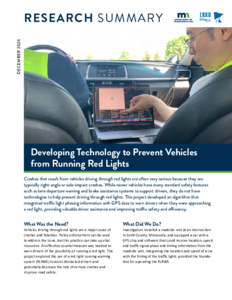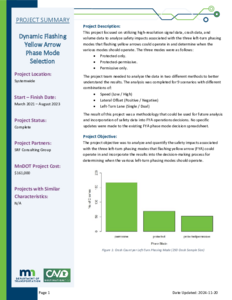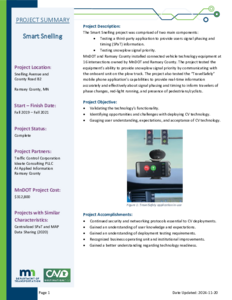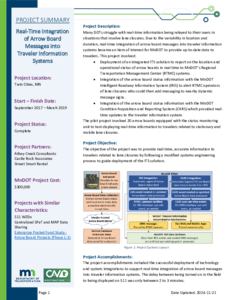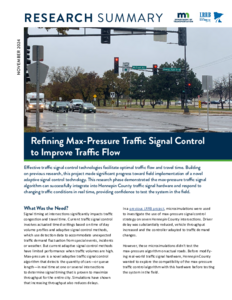Development and demonstration of a novel Red Light Running Warning System using connected v2i technology
Date Created
2024-12
Report Number
2024-33
Description
Toward implementation of max-pressure control on Minnesota roads: Phase 2
Creator
Date Created
2024-10
Report Number
2024-26
Description


